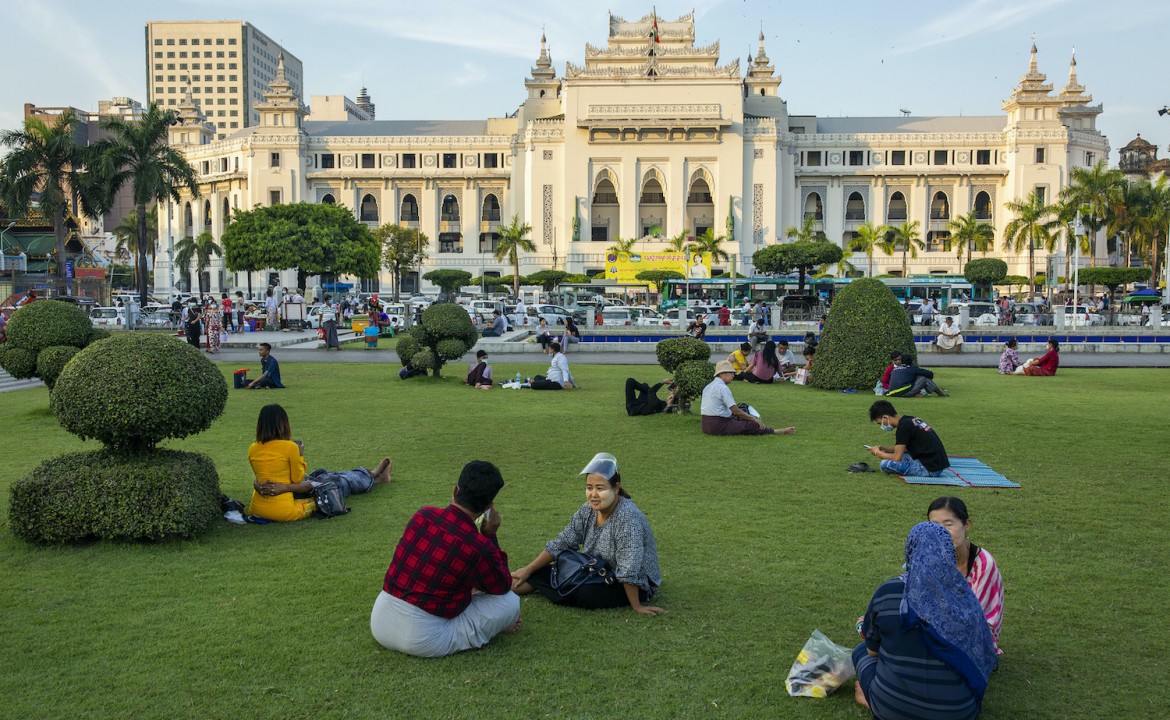


The private ownership of most of Yangon’s green space leaves residents with no choice but to crowd into the few public spaces left for them.
On December 7, two days before Myanmar’s National Day, the Kyauktada Township General Administration Department temporarily closed Maha Bandoola Park in downtown Yangon – justifiably fearing that holiday crowds might raise the risk of spreading COVID-19. But the government is now keeping the park closed indefinitely. This means downtown residents have lost their safest space for socially-distanced congregation, as well as a key asset for their wellbeing.
The COVID-19 pandemic has highlighted the need for green and public spaces in cities around the world. These spaces, which offer a respite from home, are enjoyed by many but are most needed by the poorest city dwellers, who often live in crowded homes with no private outdoor space such as balconies or gardens. These residents are also excluded from privatised green space such as hotel gardens or golf courses.
This unequal access to space is not just a matter of having a pleasant day out; access to plentiful public spaces has become a key health tool, as noted in UN-Habitat’s Guidance on COVID-19 and Public Space report.
With the growth of our scientific understanding of how the coronavirus is transmitted, we now know that one of the greatest risks comes from aerosolised particles. Because of this, enclosed, poorly ventilated spaces are not just uncomfortable after weeks of stay-at-home orders; they can be truly dangerous.
This also means that parks are some of the safest places to be, with good air circulation and space to stay physically distant from those outside one’s household. But that space is only available when the ratio of public space to residents allows for enough room.
This is not the case in Yangon, particularly in the downtown townships. Yangon has dramatically less public space per head than other major cities in Southeast Asia: 0.37 square metres per person. This is only 6.2 percent of what each resident has access to in Jakarta and 4.7pc of what each resident has access to in Bangkok.
The estimated 300,000 residents of Yangon’s downtown townships are among the worst served in this respect, with just one public park: the now-closed Maha Bandoola Park. The addition of public space on a riverside promenade and a network of parks throughout the city – proposed by the Yangon Heritage Trust in their Yangon Heritage Strategy, released in 2016 – is a wonderful plan that unfortunately remains largely unrealised. The Secretariat complex, though nearing completion, is surrounded by fencing and restricted by entrance fees (barring the fast food restaurant zone). Even the spaces Doh Eain co-created across the city with local communities and the Yangon City Development Committee, which are now under full community management, have been shut since the pandemic began.
While the city looks green from above – especially in the leafy suburbs – most green spaces in Yangon are privately owned and inaccessible to the public. This greenery does much to improve air quality, working as the city’s “green lungs”, but these spaces are barred to city residents desperate for space. Large plots in Ahlone and Dagon townships sit walled off from the public, offering just glimpses of forested bounty, and the closed-off gardens of monasteries are out of reach for those who need it most. Having more open access to currently private spaces would make a huge difference to people’s wellbeing.
Doh Eain is always keen to hear from companies, NGOs or individuals wanting to join, collaborate or contribute, either with funds, materials, skills and/or time. Contact us if you’re interested to explore opportunities.